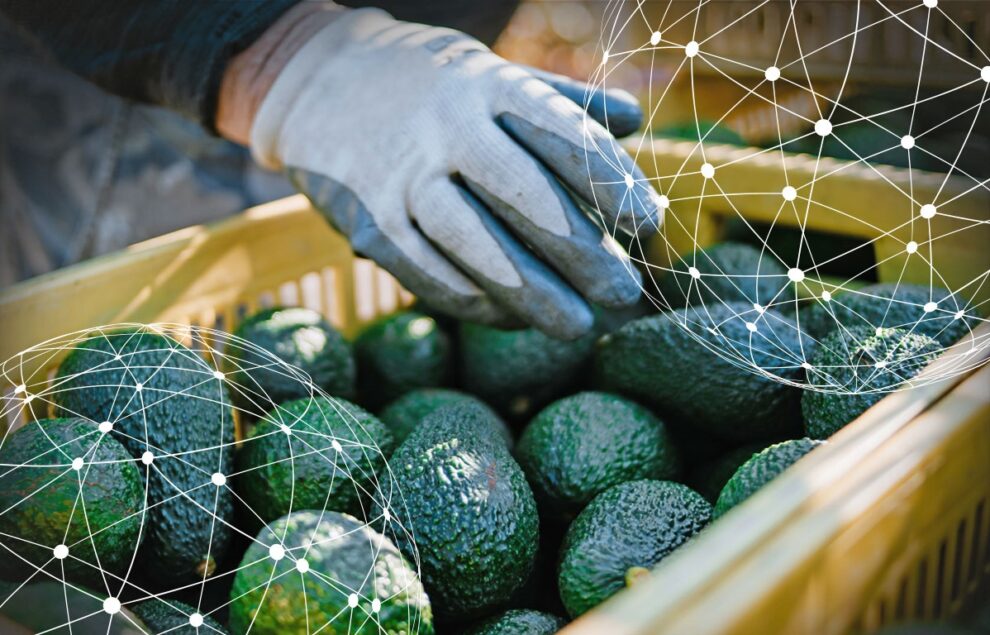Avocados remain ever popular, but consumers in some countries may have to pay extra for their fruit, as reports from some markets show. In the Netherlands, El Nino’s impact on Peruvian exports has resulted in lower volumes, making the transition to winter origins more challenging. France grapples with less dynamic consumption and high prices due to inflation and reduced production in Peru, while Italy follows European trends in avocado size and experiences a drop in prices. Spain faces a severe production decline of up to 60% in Malaga due to water shortages and drought, forcing increased imports. South Africa anticipates Chinese exports as its avocado season winds down, and North America enjoys good avocado supplies with moderating prices. Finally, Brazil emerges as an emerging avocado export power, witnessing significant growth in exports and poised to make a significant mark in the global fruit market.
Netherlands: El Nino affects Peruvian export volumes
After a period of high volumes from Peru, the El Nino effect is now causing lower volumes from the country. As a result, the transition to the traditional winter origins is a little more difficult than last year. However, according to importers, consumer purchases are now increasing From the end of September, a good market with firm prices is therefore expected.
Germany: Good sales despite holidays
A wholesaler from southern Germany sources his avocados from an international company that specializes in this product segment and sources Hass avocados from Peru, Mexico and Israel, among others.
Despite the summer holidays, sales are at a stable level. In general, demand for and sales of avocados remained constant throughout the year. Price fluctuations were limited. Besides that, he notices a trend towards ready-to-eat products. Therefore, sales for unripened avocados have dropped.
France: Less dynamic consumption and high prices
Currently on the French market are Kenyan avocados and mainly Peruvian avocados, which are gradually coming to the end of their season. On the market side, consumption is not very dynamic this September, due to the back-to-school period, but also the high fruit and vegetable prices affected by inflation. These already high prices are compounded by a lack of production in Peru, making avocados even more expensive than usual. Spanish avocados will be back in October with Bacon and Fuerte. Hass will arrive in November.
Italy: Italian market follows European trends in avocado size
Significant quantities of avocados entering Europe were recorded in August. The predominant origin entering Italy from June to the end of September remains Peru, with the Hass variety. Sizes are concentrated on 10/12/14/16. The price trend is around 25% lower than last year, due to quality problems and increased volumes. The average selling price is between €7 (size 10/12) and €8 (size 14/16/18). The Italian market, which has always been oriented towards the larger sizes (10/12), is now following European trends.
Volumes from Peru are currently down by 20% and an early end to the season is expected at the end of September. The El Niño phenomenon and severe flooding last February have severely damaged production. The Israel season is late, while Spain will not have large quantities in the fall, or rather late fall. Similarly, volumes are expected from Morocco and Portugal.
For green-skinned avocados, the available varieties are Pinkerton from South Africa (poor quality) and Kenya (better quality). There are also limited quantities of the Ryan variety from South Africa and Nabal from Peru, but they have little market in Italy. The first Ettinger avocados from Israel are expected soon.
Spain: Drop of up 60% production in Malaga
The avocado season is about to start in the South of Spain with the green varieties first. Due to the water shortage, avocado production is expected to fall dramatically by around 60% in Malaga, the main producing area in Spain. This drastic decrease in production will cause losses of millions this season. The situation of the subtropical crops on the coast of Granada is also catastrophic due to drought. Many irrigation wells have dried up and others have excessively high chloride and sodium level. Granada expects a 70% drop in the avocado production.
A large part of the avocado trees bear few leaves, which are yellowish and withered. The fruits fall to the ground or have stunted growth. Since there’s a reduced harvest, the quality of avocado seems to be high. However, since the production is so low, Spanish companies will have to import more product this year. As a result of this situation and the drought, many producers are not making profits and could stop growing avocados.
South Africa: Country waits for go-ahead for Chinese export
The avocado season is tapering off and only a few exporters will have sufficient volumes left to test the waters of the Chinese market when the industry gets the final go-ahead to send. Up until week 35, 92% of South Africa’s crop had been exported
This year South Africa is estimated to have exported 18 million 4kg cartons (72,000 tonnes), well up on last year as new plantings come to bear.
According to market analyst AMT, the current local market price average is R16.50/kg (0.8 euro/kg). At the Johannesburg fresh produce market the average price for a 4kg tray is R19.40 (0.9 euro).
For many years the industry felt itself stifled by its limited markets – Europe, UK and the Middle East to a lesser degree – where South African volumes are dwarfed by Peru’s peak supplies. The news of China opening for South African avocados was a relief not only to the avocado industry, but also to the stonefruit and blueberry industries which will next be considered.
New Zealand: Focus on Asian markets
The avocado season for New Zealand fruit has a challenging outlook this year, with an abundant supply in Australia likely to deliver challenging prices in that market. The fruit quality looks excellent across Australia and New Zealand and the marketers have turned their attention to the Asian markets. These markets have recently experienced challenging quality from South American suppliers, delivering low returns and a lot of headaches. As a result, there has been a good increase in demand for quality fruit.
North America: Prices moderating on avocados
Supplies of avocados are good as regions are shifting in their levels of supply. “Mexico is harvesting daily and that’s good,” says one shipper. “Supply is improving daily and their seasonal curve is also improving to give a better mix of sizes.”
He says that California production is tapering off with only a few more weeks left in the season. “Also, Peru shipments will go through September but they’re starting to taper off as well.” Into the fall, Colombia will also be shipping as their season gets underway in October-November.
Demand is currently good, with various holiday bumps in demand. Last weekend’s Labor Day saw good demand for example.
As for pricing, higher pricing has been seen through the summer months. “However prices on larger sizes are moderating and I think we’ll have a really good mix of sizes and a lot of promotable sizes too,” he says. “Pricing and supply will come into balance and give a steady flow of fruit. Everything looks good to have a well-supplied fall and winter.”
Brazil: A still very unknown export power in avocado
At the end of August, the Brazilian country manager of the International Fresh Produce Association (IFPA), within the framework of The Brazil Conference, made clear the role that Brazil could acquire in the global fruit market.
“One of the country’s objectives is to grow in exports; both in destinations, since there are many options for opening new markets, and in products. In fact, one of the products in which Brazil is an export powerhouse but which has not yet been developed is avocado. We are currently working on it.” And the 2023 export figures corroborate this.
In the first half of the year, avocados have become the sixth most exported Brazilian fruit – only behind lemons and limes, melons, mangoes, canned fruit and grapes – with an interannual growth of 153%. of the value and 175% on the volume shipped. “These figures are important, and it is also important to note that the lowest period for exports has occurred in the period, since when they are strong it is from August to December,” said the professional, foreseeing another significant increase in this second half of the year.
Source : Fresh Plaza
















